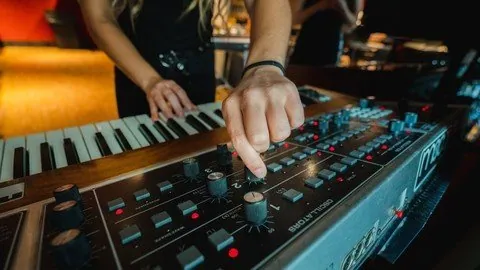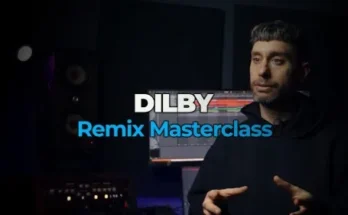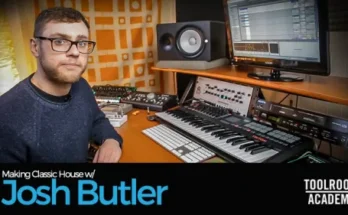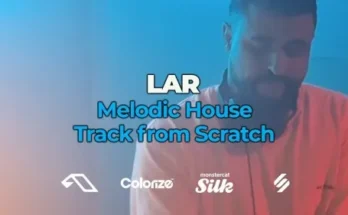Learn Modern Synthesis – Hardware and Software for any genre
What you’ll learn
Synthesis for Music Production
How to navigate and create your own sounds on hardware synths
Hear a sound and know how to re create it on a soft synth or hardware synth
How to navigate and create your own sounds on software synths
What each component on a synthesizer does
Requirements
A beginner level of Ableton Live
Have you always wanted to approach a hardware synth like a Moog or a software synth like Massive and understand how to program it? Well this course is for you.
The goal of this course is to provide students with a fundamental understanding of how synthesizers work and how to manipulate them to create the sounds they’ve always wanted to make.
Learn essential synth elements such as oscillators, filters, and envelopes: what they do, how they work together, and how to go about creating sounds beyond the manufacturer’s pre-set patches.
UPON FINISHING THIS COURSE YOU WILL KNOW:
How to identify just about any synthesizer by type, old or new, and how to use it
How to create any sound of your own concept using a hardware or software synthesizer
How to incorporate synthesizers and synth-style processing techniques into DAW programs like Ableton Live
How to distinguish where your favourite “retro” synth sounds come from along with other classic sounds like those made by Moog, ARP and Oberheim
TOPICS COVERED
Signal Generators and Signal Modifiers
Types of Synthesis (subtractive, additive, FM, wavetable etc.)
Synthesizer modules – (VCO, VCF, VCA, CV processors, LFO, Wave Shapers)
Common synthesizer layouts
Incorporating synth elements into audio production
Hardware vs. software – finding the right synth for you
WHAT YOU WILL NEED
We cover all the Ableton Live Synths so Ableton Live would be helpful but not mandatory.
We cover Native Instruments FM8 and Massive. Again not mandatory but helpful.
1. How Sound is Made (02:03)
2. What is a Synthesizer (01:54)
3. Hardware vs Software (01:09)
2 – Hardware Synth Overview
4. Moog Model D (06:42)
5. Moog Model D Jam (03:16)
6. Novation – Bass Station II (05:32)
7. Bass Station II Jam (02:02)
8. Roland System I (04:29)
9. Roland System I Jam (03:45)
10. Native Instrument FM8 (04:06)
3 – Types of Synthesis
11. Types of Synthesis (01:43)
4 – Software Synth Overview
12. Software Synth Intro (01:29)
13. Ableton Operator (03:35)
14. Serum (02:44)
15. Geography of Analog (I 02:29)
16. Geography of Analog II (04:28)
17. Loading and Saving Presets (03:01)
5 – Components of a Synthesizer
18. Hot Swap (00:47)
19. Oscillators Part 1 (35:17)
20. Osciallators Part 2 (23:49)
21. Filters (58:22)
22. Modulation (31:59)
23. Samplers and Envelopes (06:00)
24. Retriggering (09:19)
6 – LFOs
25. What is an LFO (45:03)
26. Operators LFO’s (20:36)
27. Make a Dubstep Wobble (27:53)
28. Max For Live (18:38)
7 – Frequency Modulation Synthesis
29. What is FM Synthesis? (02:45)
30. FM – Part 1 (05:44)
31. FM – Part 2 (11:38)
32. FM – Part 3 (04:01)
33. FM – Part 4 (08:57)
34. Mapping and Sound Design (07:46)
35. Making an FM Arp Sound (04:41)
36. Making an FM Piano Patch (09:38)
8 – Types of Sounds and Analysis
37. Types of Sounds (33:56)
38. Analysis of Sound (12:57)
39. Reverse Engineering Part 1 (21:26)
40. Reverse Engineering Part 2 (28:59)
9 – Physical Modelling Synthesis Ableton Live
41. Electric – Ableton Live (46:09)
42. Collision – Ableton Live (43:04)
43. Tension – Ableton Live (19:02)
10 – Sampling Synthesis Ableton Live
44. Simpler – Ableton Live (54:21)
45. Sampler – Ableton Live (52:23)
46. Instrument Racks – Ableton Live (35:10)
11 – Native Instruments
47. Intro to Massive (38:04)
48. Massive Patch Excercises (43:34)
49. Intro to FM8 (51:38)
12 – How to make a Future Pad
50. Future Pad Tutorial (32:45)




